 |
 |
 |
 |
 |
 |
| |
 |
|
 |
 |
 |
  |
  |
 |
 |
 |
 |
|
 |
|
 |
 |
 |
BUILDINGS |
 |
|
 |
|
 |
 |
 |
|
|
 |
|
|
  Belgium [Belgique/België]
Belgium [Belgique/België]
» Brussels [Bruxelles/Brussel] |
|
|
|
|
 |
|
|
  Belgium [Belgique/België]
Belgium [Belgique/België]
» Brussels [Bruxelles/Brussel] |
|
|
|
|
 |
|
|
  Belgium [Belgique/België]
Belgium [Belgique/België]
» Brussels [Bruxelles/Brussel] |
|
|
|
|
 |
|
|
  Belgium [Belgique/België]
Belgium [Belgique/België]
» Brussels [Bruxelles/Brussel] |
|
|
 |
 |
 |
 |
BIBLIOGRAPHY |
 |
|
|
 |
|
 |
 |
 |
 |
 |
 |
WRITINGS
ABOUT THE ARCHITECT |
 |
|
|
 |
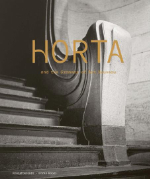 Iwan Strauven, Benjamin Zurstrassen, (ed.), Horta and the Grammar of Art Nouveau, Mercatorfonds - Bozar Bokks, Brussels [Bruxelles/Brussel] 2023 Iwan Strauven, Benjamin Zurstrassen, (ed.), Horta and the Grammar of Art Nouveau, Mercatorfonds - Bozar Bokks, Brussels [Bruxelles/Brussel] 2023
Horta and the Grammar of Art Nouveau offers an innovative insight into the architectural approach of Victor Horta (1861-1947), whose creations between 1893 and 1905 were seminal to the development of Art Nouveau architecture. This book presents a new perspective on the work, context and toolbox of the most famous Belgian architect, teasing out what remains essential to Victor Horta's Art Nouveau, apart from his style and its typical plantlike vocabulary. International experts shed new light on Horta's architectural sources, how he conceived of his designs, and innovated the use of structure and light. The book also discusses the reception of Horta within the historiography of the Modern Movement and the relation between his work and the colonial enterprise of King Leopold II.
This publication is amply illustrated with maps, plans, plaster models and exceptional unpublished photographic material commissioned by Victor Horta himself. These archival sources are complemented by a series of photographs made by the architectural photographer Maxime Delvaux, specially made for this book. They offer a contemporary view of Horta's buildings from the angle of the various themes discussed throughout the book. |
|
|
| Michèle Goslar, Victor Horta 1861-1947. L’homme, l’architecte, l’art nouveau, Fondation Pierre Lahaut, Fonds Mercator, Bruxelles 2012 |
|
|
| Maurizio Cohen (ed.), Victor Horta, Zanichelli, Bologna 1994 |
|
|
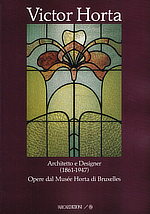 A.M. Fioravanti, Anna Soncini Fratta (ed.), Victor Horta architetto e designer. (1861-1947). Opere del Musée Horta di Bruxelles, L'Arcaedizioni, Milano 1991 A.M. Fioravanti, Anna Soncini Fratta (ed.), Victor Horta architetto e designer. (1861-1947). Opere del Musée Horta di Bruxelles, L'Arcaedizioni, Milano 1991 |
|
|
| Franco Borsi, Paolo Portoghesi, Victor Horta, Editori Laterza, Bari 1982 |
|
|
| Agnoldomenico Pica, "libri/books", Domus 482, gennaio/january 1970, p. 17 |
|
|
| Franco Borsi, Paolo Portoghesi, Victor Horta, Edizioni del Tritone, Roma 1969 |
|
 |
 |
 |
 |
EXHIBITIONS |
 |
|
|
 |
|
 |
 |
 |
|
|
 |
Victor Horta et la grammaire de l'Art nouveau / Victor Horta en de grammatica van de art nouveau / Victor Horta and the Grammar of Art Nouveau, Brussels [Bruxelles/Brussel], Bozar, 18 october 2023 / 14 january 2024
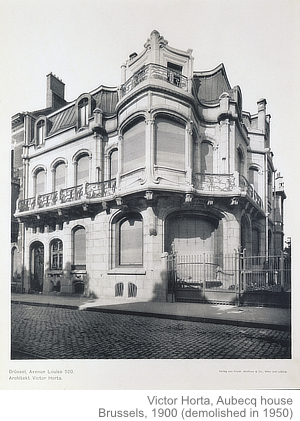 On the occasion of Art Nouveau Brussels 2023, Bozar, in collaboration with the Horta Museum, presents an exhibition exploring the architectural approach of Belgian architect Victor Horta (1861-1947). On the occasion of Art Nouveau Brussels 2023, Bozar, in collaboration with the Horta Museum, presents an exhibition exploring the architectural approach of Belgian architect Victor Horta (1861-1947).
Through archival documents, photographs, plans, original sketches, and models, the audience will get a picture of the underlying structure of Horta's architectural language through the course of nine chapters. Various buildings are featured-from bourgeois houses like the Tassel House to public buildings like the Palais des Beaux-Arts (Centre for Fine Arts) or the Waucquez department store. The exhibition also focuses on the broader social context in which Horta created his projects.
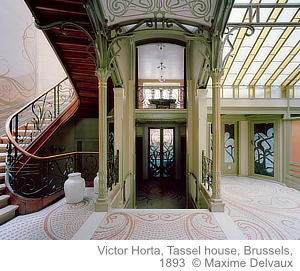 The Palais des Beaux-Arts rose up in the centre of Brussels in 1929. Its overall design was sketched out by Victor Horta and may count as one of the highlights of his career. The Centre is therefore the location of choice for an exhibition that shines light on the oeuvre of one of Belgium's most influential architects. The Palais des Beaux-Arts rose up in the centre of Brussels in 1929. Its overall design was sketched out by Victor Horta and may count as one of the highlights of his career. The Centre is therefore the location of choice for an exhibition that shines light on the oeuvre of one of Belgium's most influential architects.
Through nine consecutive rooms, this exhibition examines Horta's grammar of Art Nouveau created between 1893 and 1903. Each room will focus on one of Horta's buildings, around which a recurring theme or aspect of his design method will be elaborated.
The first three rooms deal with Horta's world of thought and life: the architectural references he brought together in the invention of Art Nouveau (Hotel Tassel), the three successive studios as sites of design (the studio-house on Rue Americaine), and the network of clients for whom he built (Maison Vinck).
The next three rooms deal with fundamental architectural themes present in both his Art Nouveau work and his later realisations. These include the dynamic plan construction around natural light sources (Hotel Aubecq), the ambiguity between inside and outside (Waucquez department store), and the rhetorical use of structure (Maison du Peuple).
The final rooms explore the link to the wider era in which Horta's work was created: the exceptional wealth of young Belgian industrial capitalism is addressed with the Hotel Solvay, the link between Horta's Art Nouveau and Congo Free State is questioned focusing on the Hotel Van Eetvelde, and on the unfinished project for the Congo Pavilion at the 1900 Paris World's Fair. The latter is a first: based on the recently discovered plans for the pavilion, a model was realised especially for the exhibition.
Some contemporary artists offer a current look at Horta's work. Photographer Maxime Delvaux created new photos of several Horta buildings. Marie-Ange Guilleminot's film Vivre la maison Horta premieres in conjunction with the exhibition and can be viewed in the exhibition rooms. At last, French-Canadian artist Kapwani Kiwanga creates new work, a rug with a decorative floral pattern that refers to the ornamental Art Nouveau style (on display from 10.11.23 > 10.03.24 in the Salle du Conseil).
Victor Horta and the Grammar of Art Nouveau is curated by Benjamin Zurstrassen, director of the Horta Museum, and Iwan Strauven, professor of architectural theory at the ULB. A publication published by Mercatorfonds and Bozar Books, featuring essays by several national and international Horta experts such as Aniel Guxholi, Deborah Silverman, and Dirk van de Vijver, will also appear on the occasion of the exhibition. Those experts also provide additional explanations via 'talking head' videos in the exhibition rooms . |
|
|
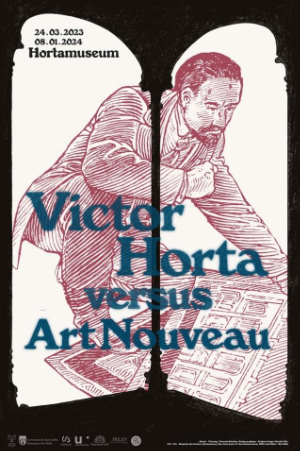 Victor Horta versus Art Nouveau. Victor Horta's vocabulary, Brussels [Bruxelles/Brussel], Hortamuseum, 24 march 2023 / 8 january 2024 Victor Horta versus Art Nouveau. Victor Horta's vocabulary, Brussels [Bruxelles/Brussel], Hortamuseum, 24 march 2023 / 8 january 2024
The aim of this exhibition is to present Horta in a different light. Let's forget the style-related themes and preconceived images applied to this architect. Let's even try to forget Art Nouveau for a moment - altough a useful label, it can sometimes be reductive. With this in mind, let's abandon our preconceptions and take a fresh look at Horta to see what he has to tell us (and conceal from us). We'll be looking at the role of his wife, Pauline Heyse, and of his mentors – Balat and Viollet-le-Duc – as well as the inspiration he also gained from Egypt, Greece and the 18th century, not to mention his admiration for the Opéra Garnier and the Palace of Justice in Brussels. Was Horta an eclectic architect?
|
|
|
| The Cradle of Art Nouveau: Victor Horta and Brussels, Washington D.C., DAC District Architecture Center, 15 october 2012 / 28 february 2013 |
|
|
| Victor Horta architetto e designer. (1861-1947). Opere del Musée Horta di Bruxelles, Ferrara, Palazzo dei Diamanti, 21 december 1991/1 march 1992 |
|
 |
  |
 |
|
|